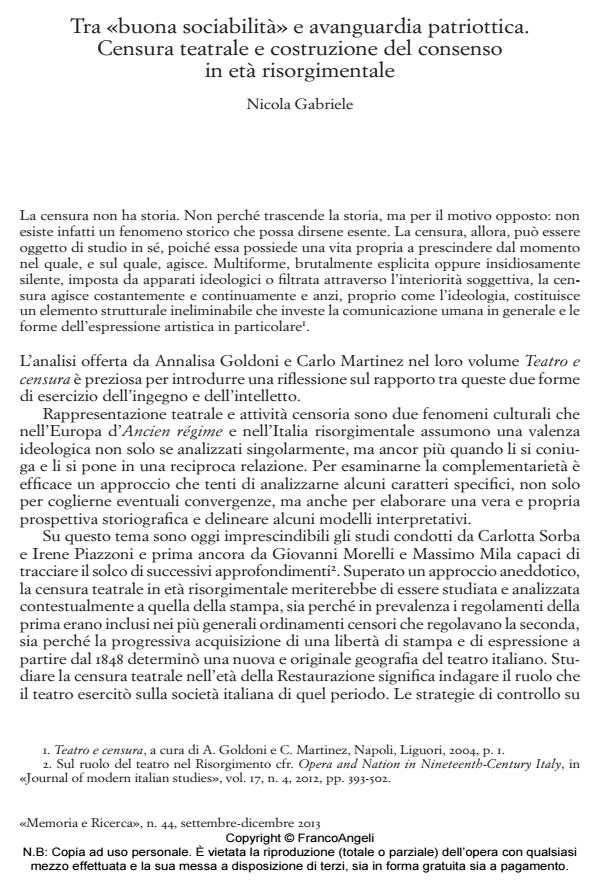Between "good sociability" and patriotic avant-garde. Theatrical censorship and the building of Risorgimento
Journal title MEMORIA E RICERCA
Author/s Nicola Gabriele
Publishing Year 2013 Issue 2013/44
Language Italian Pages 18 P. 25-42 File size 125 KB
DOI 10.3280/MER2013-044003
DOI is like a bar code for intellectual property: to have more infomation
click here
Below, you can see the article first page
If you want to buy this article in PDF format, you can do it, following the instructions to buy download credits

FrancoAngeli is member of Publishers International Linking Association, Inc (PILA), a not-for-profit association which run the CrossRef service enabling links to and from online scholarly content.
Theatre and censorship are two cultural phenomens that during the age of Risorgimento acquire an ideological significance if you compare the two together. In Europe’s Ancien Regime the theatre was considered a «model of order and good sociability », a «virtuous school» where spectators were checked and controllable. But in the first half of the nineteenth century, the Italian theatre does not represent only a «sociability» check point; Opera and Melodrama were artistic forms capable of circulating the ideals of the Risorgimento. The importance that authorities attributed to censorship to check the public’s demonstrations that often accompanied theatrical performances was understandable. After the italian unification it attempted to reaffirm a censorship model inclined to entrust the theatre a social and educational role to control the people, that recalled more in content than in form, the intent of the divided government to entrust at shows and at architectural structures, where they were hosted, the task of contributing to popular education and public order.
Keywords: Censorship, theater, opera, Risorgimento, education, public order
Nicola Gabriele, Tra "buona sociabilità" e avanguardia patriottica. Censura teatrale e costruzione del consenso in età risorgimentale in "MEMORIA E RICERCA " 44/2013, pp 25-42, DOI: 10.3280/MER2013-044003